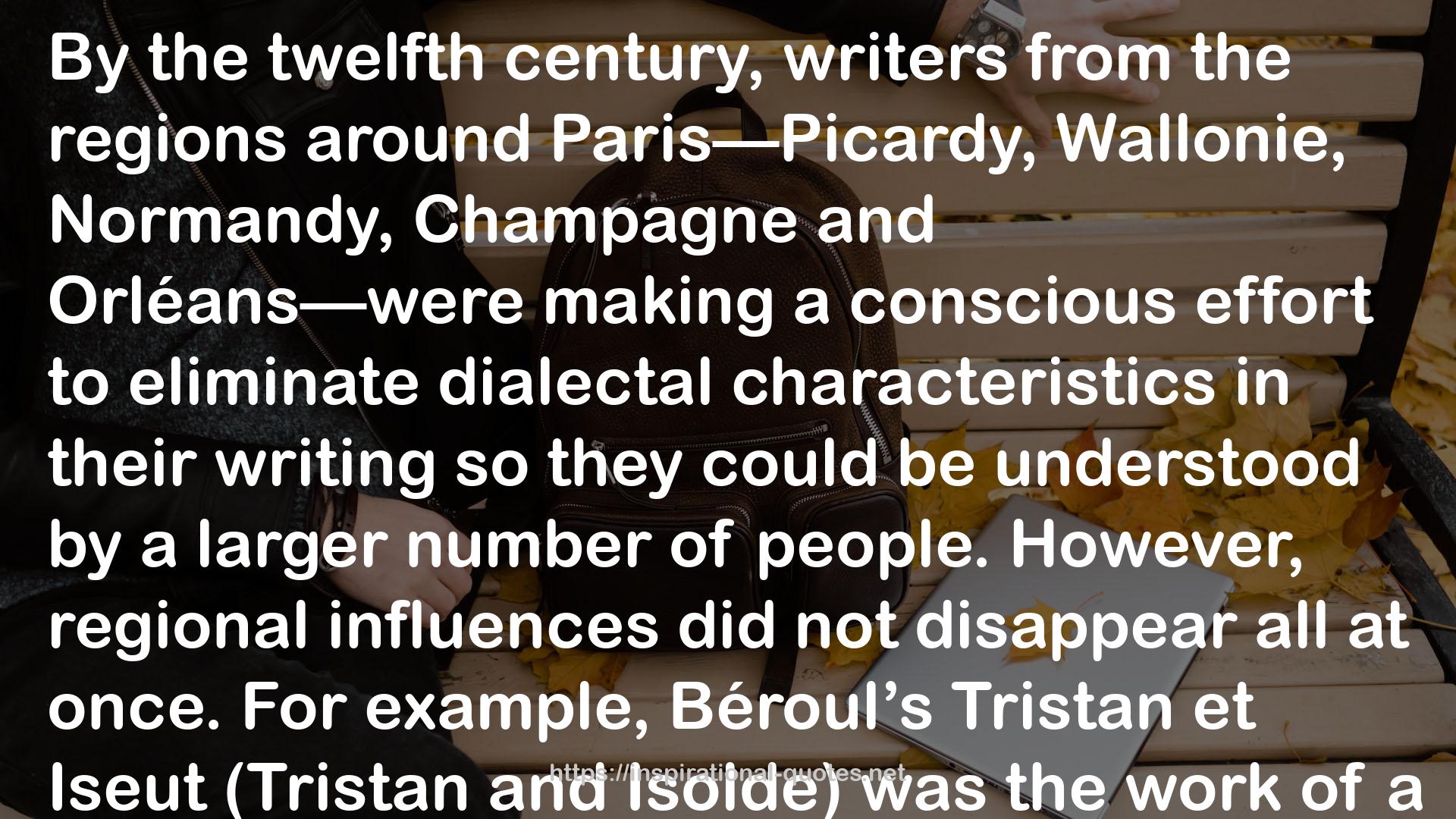" By the twelfth century, writers from the regions around Paris—Picardy, Wallonie, Normandy, Champagne and Orléans—were making a conscious effort to eliminate dialectal characteristics in their writing so they could be understood by a larger number of people. However, regional influences did not disappear all at once. For example, Béroul’s Tristan et Iseut (Tristan and Isolde) was the work of a Norman-speaking trouvère (a troubadour of the north), whereas Chrétien de Troyes’s Romans de la table ronde (Stories of the Round Table) clearly shows accents of Champagne. Yet their writing shows they purposefully blurred dialectal differences. It was not the last time in the history of French that a group of writers would take the lead in hammering out the language. According to the French lexicographer Alain Rey, by the twelfth century this scripta—which Gaston Paris called Francien— already existed in an oral form among the lettrés (men and women of letters). But Francien took much longer to become a mother tongue. Somewhere between the beginning and the end of the second Hundred Years War (1337–1453), a significant part of the urban population of Paris had acquired a sort of common language they called Françoys, and each generation was transmitting more of this tongue to its children. Year after year its vocabulary widened beyond words for trade and domestic life. After millions of informal exchanges at all levels of society over centuries, this scripta finally became a common mother tongue. "
Image for Quotes
